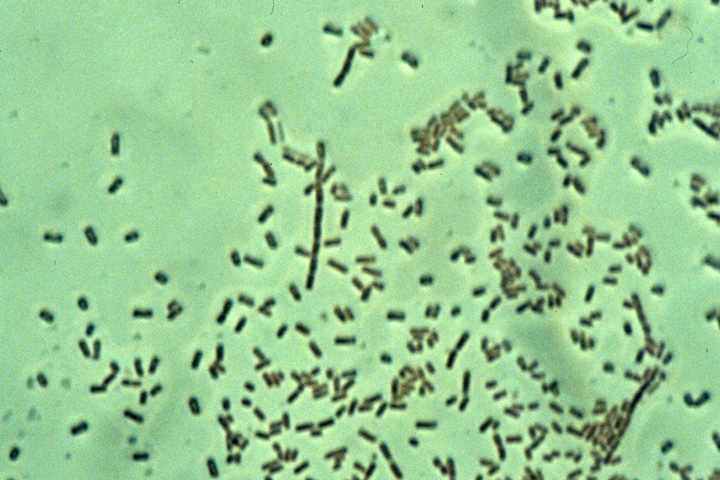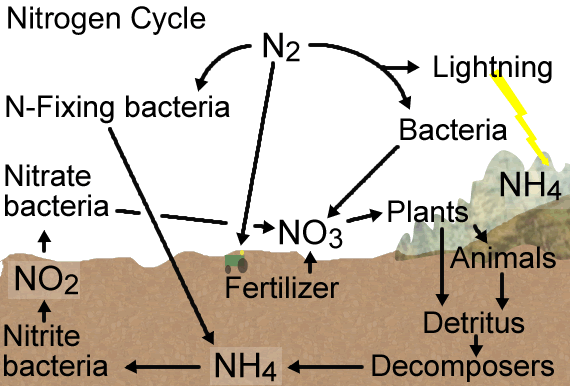Soil
Soil Organic Matter
Soil Organic Matter (SOM) plays an important role in the development and functioning of terrestrial ecosystems and it is one of the most important factors when describing soil quality and fertility. Microorganisms are the first colonizers of the soil, and they are mainly responsible for some of the steps in carbon (C) and nitrogen (N) cycles. They transform SOM into inorganic and organic C and N. Biological decomposition of SOM is the largest source of nutrients that can potentially be used for plant growth. As plants use almost exclusively inorganic nutrients, they rely on soil microorganisms to mineralise organic nutrients for growth and development. Microbial activity is an indicator of soil quality and has the ability to predict changes in soil properties. Soil is a heterogeneous, discontinuous and structured environment wherein microbial life exists in discrete microhabitats, the chemical, physical and biological characteristics of which differ in both time and space. The conditions of these microhabitats and the different decomposition rates of SOM, depending on its biochemical composition and the physical-chemical properties of the soil, affect the activity of the soil decomposer community. Bacteria are the most abundant microorganisms in soil, followed by fungi and algae. These organisms are especially abundant in the soil surface layers where they thrive on the large quantities of organic compounds from dead root material and root exudations.

Fig. 1: A ton of microscopic bacteria may be active in each acre of soil.
Credit: Michael T. Holmes, Oregon State University, Corvallis. From http://soils.usda.gov/sqi/concepts/soil_biology/bacteria.html
The microorganisms - depending on temperature, oxygen, pH and available substrate among other variables - use different catabolic pathways to attain the energetic requirements for their cellular viability and to synthesize biomass for growth. Mineralization refers to the net release of mineral C and N with the decay of organic matter, and immobilization refers to the transformation of inorganic compounds to the organic state. Microorganisms intervene in both processes. Nitrification plays an important role in the control of mineral N transformation from the less mobile NH4 to NO3, more soluble and absorbed by plant roots. The nitrification process interfaces with other processes of the N cycle, a feature that contributes to the difficulty of its study.

Fig. 2: Nitrogen Cycle, from http://bioweb.wku.edu/faculty/ameier/ecosystem.htm
To our knowledge this is the first study of the C and N dynamics in soil ecosystems using individual-based simulations. This work presents a bottom-up approach for the microbial soil system involved in these C and N transformations. The formulation of these kinds of models is both a feasible alternative and a valuable tool to investigate complex systems, the dynamics of which are mainly driven by microorganisms such as SOM dynamics. The first and main objective of this work is to develop INDISIM-SOM (an extension of INDISIM), an individual simulation model that enables us to study microbial activity in soil, dealing with the mineralization and immobilisation of C and N, and the integration of the nitrification process in this context. INDISIM-SOM is focused on the microbial activity. It also takes into account the role of C and N during their microbial lives, thus linking the C and N cycles. The first step in the framework of a wider research project of ecological modelling is to check whether: i) the calibration of the INDISIM-SOM is feasible, and ii) the evolutions predicted by this simulator of variables related to C and N, together with those related to the microbial activity, follow short-term experimental evolutions under specific conditions. The simulator INDISIM-SOM controls a group of microbial cells at each time step, using a set of time dependent variables for each microorganism. The space is divided into square cells. In each spatial cell, the amounts of different types of organic compounds are controlled. These are identified as polymerised organic C and N, labile organic C and N, mineral compounds like NH4, NO3, CO2 and O2. The model takes into account the activity of two prototypes of microbial cells: ammonifier microorganisms and nitrifier bacteria. Different metabolic pathways and sources of C and N they can use are identified. Some state variables and parameters related to soil organic matter and microbial activity: growth and decay of microbial biomass, and temporal evolutions of mineralised intermediate N, mineral N in ammonium and nitrate, CO2 and O2 are studied.
INDISIM-SOM has been calibrated using experimental data from incubations of different Catalonian soils.

Fig. 3: Sketch of mineralization and immobilisation of C and N and
nitrification process due to the microbial activity in INDISIM-SOM
CLICK HERE FOR AN INDISIM-SOM DEMO
- INDISIM-SOM, an individual-based simulator of Microbial Activity to Study Mineralization and Nitrification Process in Soil
aneto.upc.es/simulacio2/hoja-portada.html
Share: